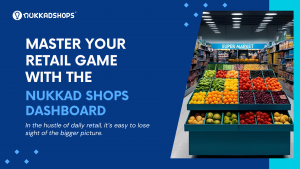The biggest complaint of most shoppers today — aside from prices being too high — is how long it takes to check out.
Yes, big brands have got a solution for you and this is what Cashless and Cashier-less Stores can do.
Amazon opened its first cashier-less Amazon Go store in Seattle this year and plans to open more locations in Chicago and San Francisco. The Overhead cameras and other technology can track the customers and know what they’re buying. But Amazon is not alone in venturing into this space.
Walmart has recently joined forces with Microsoft as it works to defend itself against Amazon. The two companies have signed a five-year agreement, which will see Walmart using Microsoft’s cloud and artificial intelligence (AI) technologies, in order to make shopping “faster and easier” for its customers. Moreover, immediately after the launch of Amazon Go, Kroger also announced that it will expand its Scan, Bag, Go technology as soon as possible.
And India is not far behind in making this technological innovation. Kochi based Watasale has introduced the next generation shopping experience for its customers, using the ‘Just walk out shopping technology’ for the first time in India.
Every big giant is trying to build a solution to make clientele loyal by playing on the customer- convenience quotient.
But do you really think that Amazon started this? Surprisingly, this concept was launched by Alibaba Group which opened its first cashier-free retail store in China on July 20, 2017.
The Chinese e-commerce and tech giant opened its first Tao Café, an experimental cashless cafe, empowered by artificial intelligence and data technologies through the use of the Alipay e-payment service.
BingoBox is one of the startups opening cashier-free convenience stores across China. BingoBox now has over 200 shops in 29 cities in China that sell snacks, beverages, and other items, Amazon uses artificial intelligence and computer vision whereas BingoBox uses RFID technology for checkouts
China’s wave of cashier less outlets includes more than shopping. Cashier-less restaurants, mini gyms, and Karaoke booths have also spread across the country. But as a whole, it shows how quickly the country’s tech companies are jumping on a new trend.
This is the future we have to keep an eye on
Let’s look at the Pros and the Cons
The Pros
Efficiency and Speed of Checkout
Perhaps the biggest advantage is the added speed with which customers can check out and pay for their purchases. Rather than dealing with long queues that are crowded with customers waiting to pay, people can quickly make purchases by ringing up items themselves.
Self-Checkouts Take Up Less Space
Because multiple kiosks can be placed in a relatively small area, stores can take care of customer transactions with minimal space. In some cases, up to five kiosks can take up the same amount of space as a traditional checkout counter
Fewer Employees to Pay
Salaries of multiple cashiers can increase the expenses. During slack hours when few to no customers are checking out, cashiers aren’t doing any tasks and are being paid for nothing. It will result in lower overhead costs while still providing customers with the same experience they need.
The Cons
Customer Difficulties
While many people who are tech-oriented can easily understand the self-checkouts, it may be problematic for others. Many customers don’t feel comfortable with this self-checkout process or don’t want to put efforts in checking themselves out.
Potential for Theft
Although most systems are equipped with some form of anti-shoplifting technology, there is often a greater likelihood of theft occurring. It will be easier for customers to steal because employees are not able to monitor customer transactions as closely on self-checkouts,
Lack of Personal Interaction
Efficiency of this system has no doubts, many customers prefer to have a one-on-one interaction with cashiers while checking out. According to Statistic Brain, this type of checkout is more popular among the younger generations. The popularity gradually decreases with older generations. Perhaps the best way to enhance the customer experience for businesses to offer a combination of self-checkouts and traditional checkouts with cashiers.
Unemployment
Walmart employs nearly 2 million cashiers, who are already fearful of their future. It’s clear that the commerce of the near future will follow these methods, whose organizational processes, both internal and for the public, are largely based on technology.
But why are companies going for Cashier-less stores?
The answer is data gathering operation. Stores are going to be filled with hundreds of machine learning cameras (including computer vision) that track your every movement and figures out what items you pick out.
In other words: every item you scan and every move you make, a camera will be watching you – where you live, what you eat, what sections in the store you’re dwelling in, what items you look most at etc.






its amaze tech… we have 3 medium super markets.